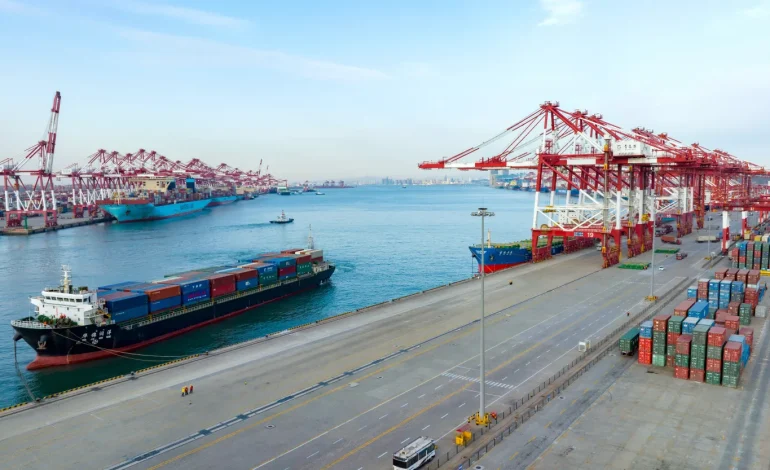China’s exports saw a sharp and unexpected rise in March, climbing 12.4% from a year earlier, as companies raced to ship goods before new US tariffs took effect.
While the boost provided a temporary lift to trade data, analysts warn the coming months may reveal a much harsher reality for the country’s export-driven economy.
The increase marked the highest monthly growth since October 2024, far exceeding economists’ forecasts of a 4.4% rise. However, it was largely attributed to a “frontloading” effect, with exporters accelerating shipments to avoid punitive tariff hikes imposed by the United States under President Donald Trump’s second term.
In contrast, imports fell 4.3% year-on-year, reflecting subdued domestic demand, adding to concerns about the strength of China’s economic recovery. Weak consumption, a property sector slowdown, and deflationary pressures continue to weigh heavily on growth prospects.
China’s trade surplus for March stood at $102.6 billion, with the surplus against the US in the first quarter reaching $76.6 billion. This imbalance could further strain bilateral ties, as addressing trade deficits remains a central focus of US trade policy.
Since taking office in January, President Trump has significantly escalated tariffs on Chinese imports, now totaling 145% across most categories. The move follows allegations that Beijing has not done enough to curb fentanyl exports to the US In response, China has imposed tariffs of up to 125% on American goods and tightened restrictions on critical raw materials like rare earths.
While some electronics — such as smartphones and semiconductors — were temporarily exempted from the new duties, many economists believe the overall trade environment has become more volatile and uncertain.
“Exporters rushed to ship goods before tariffs kicked in, but we expect a sharp drop-off going forward,” said Julian Evans-Pritchard, head of China economics at Capital Economics. “It could take years before exports return to these levels.”
Trade data suggests exports of lower-value goods like textiles are already in decline, while high-tech and capital-intensive goods temporarily increased as U.S. buyers built up inventory.
Despite the strong export figures, China’s domestic economy continues to struggle. Imports of key raw materials such as iron ore, soybeans, and coal all fell sharply in March. Soybean imports, in particular, plummeted by 36.8%, with some analysts suggesting state-owned enterprises may have already reduced purchases from the US.
Semiconductor and crude oil imports were among the few categories that saw increases, signaling selective sectoral resilience. Still, weak domestic consumption, as reflected in declining consumer and producer prices, has led to calls for more fiscal and monetary stimulus.
“More aggressive policy support is expected,” said Zhiwei Zhang, chief economist at Pinpoint Asset Management. “In the short term, I expect supply chain disruptions and potential inflationary effects in the US, but for China, the immediate concern is maintaining economic momentum.”
The World Trade Organization has cautioned that ongoing trade tensions between the world’s two largest economies could significantly reduce global trade flows. Investment banks have taken note, with Goldman Sachs and Citi both slashing China’s 2025 growth forecast below the official target of “around 5%.”
China is expected to unveil its first-quarter GDP figures this week, with further economic stimulus likely to be announced at a high-level Politburo meeting later this month.
Meanwhile, President Xi Jinping has embarked on a regional tour to strengthen economic ties with Southeast Asian nations. China’s exports to the region rose 11.6% in March, with notable gains in trade with Vietnam and India, suggesting that Chinese exporters may be seeking to diversify away from the US market.
The Associated Press, CNBC, and Reuters contributed to this report.









The latest news in your social feeds
Subscribe to our social media platforms to stay tuned